Australian Space Agency will be based in Lot 14, the old Royal Adelaide Hospital site, as City Deal announced
Nothing is being ruled out of the role played by the Australian Space Agency, including direct involvement by Australian companies in the exploration of space, the federal science minister says. The Advertiser exclusively revealed last night the agency’s headquarters will be at the former RAH site.
SA News
Don't miss out on the headlines from SA News. Followed categories will be added to My News.
- THE LOCATION: City Deal to transform old RAH into space site
- EXPLAINER: So what is a City Deal anyway?
- REACTION: What readers think of Space Agency in Adelaide
- ANALYSIS: How Adelaide’s bid came out on top
Australia’s space mission control centre will be right here in Adelaide, at the old Royal Adelaide Hospital site.
The Advertiser can reveal South Australia has beaten other states and territories — including former favourite Canberra — to make the old RAH (now known as Lot 14) home to the Australian Space Agency.
Adelaide has also won a City Deal to transform the site into an international drawcard in a huge SA coup, with the Space Agency as its centrepiece.
The agency is tasked with tripling the space industry by 2030, lifting its revenue to $12 billion and creating 20,000 jobs.
PM and Premier checking out the Inovor sat pic.twitter.com/oRogEqJKjQ
— Tory Shepherd (@ToryShepherd) December 11, 2018
Former CSIRO chief executive Megan Clark has been appointed to lead the organisation and said the agency would grow and transform the local space industry.
“We’re already getting support from around the world and from industry,” Dr Clark said.
“We’ve got a pipeline over the next three years of over $1 billion of capital being invested in the space industry.
“This is going to be a hotbed of creativity.”
A key role for the agency will be to help local companies break into the supply chains of major global players in space technology and space infrastructure.
Federal Industry, Science and Technology Minister Karen Andrews said nothing, including direct involvement by Australian companies in the exploration of space, was being ruled out.
“There are already satellite launches that are happening in Australia,” Ms Andrews said.
“So launch is part of our capability and we’re already setting up strategic alliances with other nations.
“We will continue to build and grow the sector and who knows where that may take us.”
The Australian Space Agency is proud to launch our new brand, one that serves our nation, honours our past and builds the future.https://t.co/AgdXGOxNFH pic.twitter.com/OEggh6HIlU
— Australian Space Agency (@AusSpaceAgency) December 12, 2018
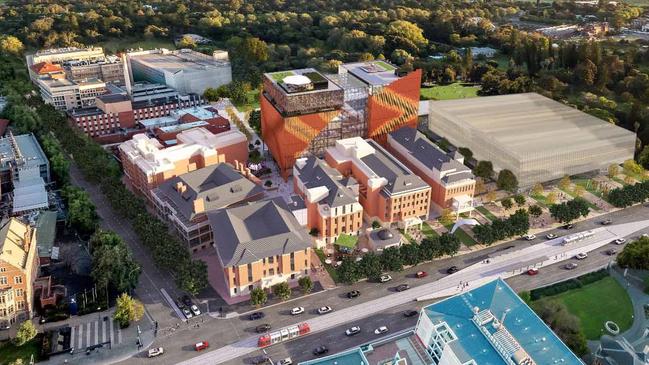
Prime Minister Scott Morrison joined Premier Steven Marshall on Wednesday to announce the historic decision.
Australia was almost the last developed nation to get its own agency.
Even New Zealand had one.
Last year, the Federal Government announced $41 million funding over four years to create an agency.
The agency, headed by former CSIRO chief Megan Clark, started work in July.
Mr Marshall said this morning: “This place will go through the roof. We will make Australia proud.”
He said Lot Fourteen would be a “job magnet”.
Mr Morrison said the decision to base the agency in Adelaide was a nod to SA’s contribution to space. Australia’s first satellite was launched from Woomera in 1967.
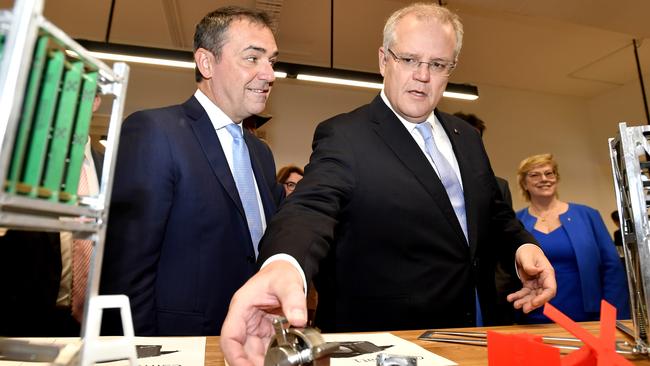
“Australia’s space industry is set to hit new heights,” Mr Morrison said.
“This agency is going to open doors for local businesses and Australian access to the US$345 billion global space industry.”
Mr Marshall has been lobbying furiously to make Adelaide the “Houston” of the new agency. Houston is home to NASA’s Johnson Space Centre.
“We want mission control,” he told The Advertiser just two weeks ago. On Tuesday he said the long-term investment would drive entrepreneurship and innovation.
“I look forward to working with the Federal Government, industry and our education sector to capitalise on this incredible opportunity for our state,” he said.
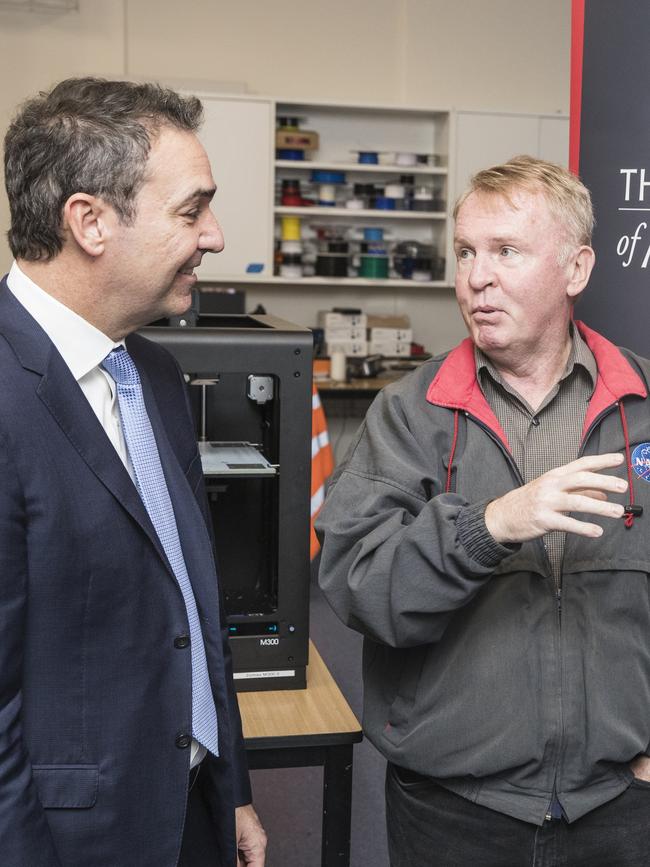

He showed Dr Megan Clark around Lot Fourteen as he spruiked SA’s wares, and also had Adelaide-born NASA astronaut Andy Thomas backing the campaign.
Dr Thomas said on Tuesday that SA “wrote much of its history by bringing developments in science, engineering and social progress to the national stage”.
“This exciting decision continues that legacy so that Australia can boldly go to that final frontier and build new industries, create new economic and employment opportunities, and excite a new generation of homegrown entrepreneurs and innovators,” he said.
The agency is industry-focused and will have a staff of 20. Dr Clark will set up an interim office immediately, and the agency will be in full swing by the middle of next year. It will co-ordinate and advise industry Australia-wide as well as government.
The Government has consistently emphasised that the space industry here is not about sending people to the Moon or Mars (although some people are working towards those goals).
Known as Space 2.0, the focus is now on sending low-cost, small satellites into orbit to collect and transmit data in ways that will transform Earth’s industries.
They enable the Internet of Things which allows almost anything to be connected to the internet.
Bushfires, the water in the Murray and a farmer’s flock can all be monitored from space.
Defence increasingly needs space for navigation and information.
Mr Marshall said existing space companies and the growing defence sector made SA an ideal location.
“Establishing the headquarters of the Australian Space Agency in SA will launch our space and defence sectors to the next level,” he said.
Opposition Leader Peter Malinauskas also pushed for a Space HQ in Adelaide, saying it was the “natural home” of such an agency.
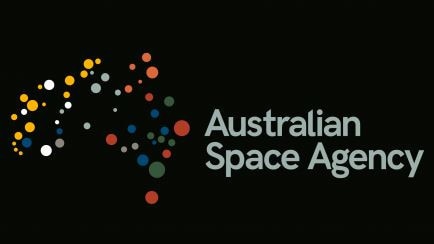
However, his federal counterparts had a policy to put it in Canberra.
Senator Kim Carr, Labor’s innovation spokesman, said the headquarters should be in the national capital with nodes in all the states and territories.
But Industry Minister Karen Andrews confirmed that SA put forward the strongest case.
“SA is already home to more than 60 organisations and 800 employees in the space sector and this decision builds on the very strong technology and defence presence in the state,” she said.
“We are committed to growing Australia’s space sector, and our Government is also investing $260 million to develop world-leading satellite capabilities, and to significantly increase GPS accuracy in our cities and regional areas.”
South Australia’s rich history in space exploration
1947: Woomera Rocket Range was established in SA on the Arcoona plateau as part of an agreement between the British and Australian governments, under the Anglo-Australian joint project. More than 4000 short-range missiles were tested between 1947 and 1980.
1950s: Larger Blue Streak missiles were developed and testing and launcher sites were constructed on the edge of Lake Hart. The Blue Streak rocket became the first stage of the Europa rocket, developed jointly by Britain, France, West Germany (now Germany), Belgium, Italy and the Netherlands, under the European Launcher Development Organisation Program.
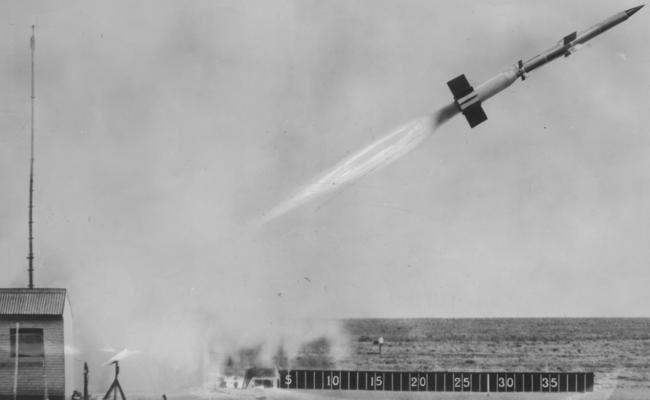
1957: The first of more than 250 Skylark sounding rockets, above, launched from Woomera.
A Minitrak satellite tracking station and Baker-Nunn satellite tracking camera were established in Woomera, starting a long association between Australia and the US in the field of space tracking.
1960: NASA established a deep-space instrumentation facility at Island Lagoon and a Mercury spacecraft communication station at Woomera.
1967: The Australian-built Weapons Research Establishment Satellite (WRESAT 1) was successfully launched into orbit from Woomera, making Australia the third country, after the US and the former USSR, to launch a satellite to orbit from its own territory.
1971: Britain’s Black Arrow rocket launched from Woomera, carrying the satellite Prospero into polar orbit, where it will remain until about 2070.
1996: SA-born astronaut Dr Andy Thomas conducted his first trip into space on the space shuttle Endeavour.

US company, Kistler Aerospace Corporation developed the first reusable launch vehicle, called Kistler K-and chose Woomera over Nevada to be the first site for test launches.
Also in 1996, 13 Japanese Automatic Landing Flight Experiment landing trials took place and the Japanese also established four 10m space satellite telescopes north of the Woomera airfield.

2002-04: Japanese Aerospace Exploration Agency conducted National Experimental Supersonic Transport flight trials at Woomera. JAXA undertook significant upgrades at Woomera with extensive support from the Royal Australian Air Force and Adelaide aerospace companies.
2010: South Australia was the landing site for Hayabusa 1, the first unmanned spacecraft to return to Earth.
Following the success of the first mission, Hayabusa 2 was launched in 2014 and is due to return to Woomera in 2020.
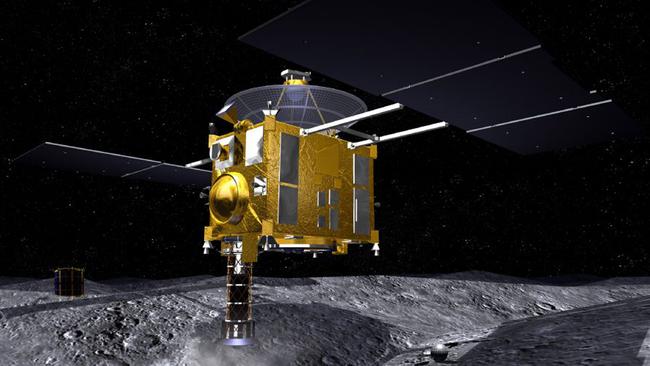
2011: University of South Australia started the Southern Hemisphere Space Studies Program in collaboration with the International Space University.
2015: Flavia Tata Nardini, Dr Matt Tetlow and Matt Pearson launch the start-up Fleet Space Technologies with the aim of launching hundreds of nano-satellites worldwide.
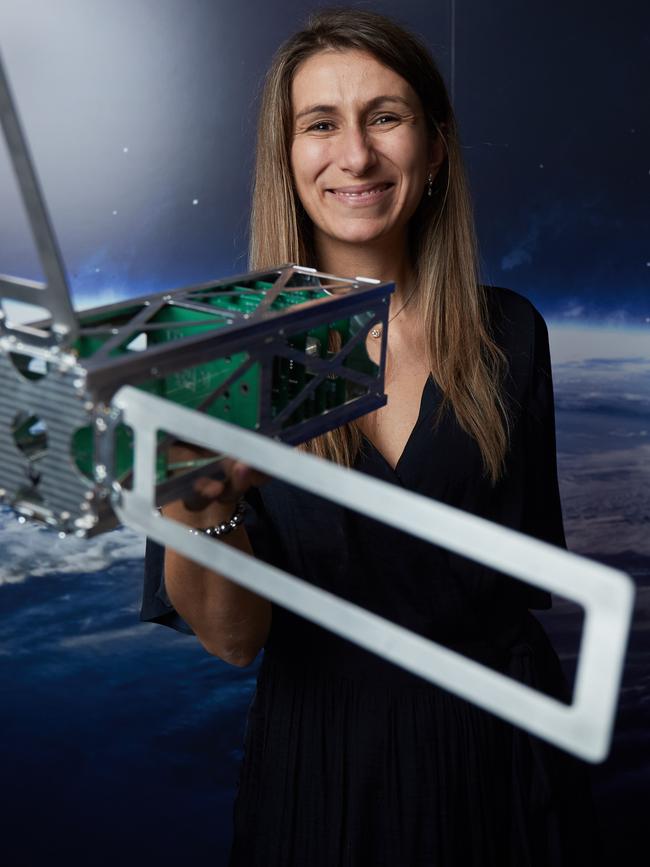
2016: State Government creates the South Australian space office.
2017: Adelaide University and UniSA teamed up to develop one of 50 CubeSats as part of the global QB50 initiative, one of four Australian satellites to be built over 15 years.
October 2018: State Government announces plans to create an innovation, incubator, start-up and growth hub at Lot Fourteen, site of the old Royal Adelaide Hospital.
December 4, 2018: Premier Steven Marshall announces plans to build rocket launching site at Whalers Way, near Port Lincoln, to launch satellites over the Great Australian Bight.
More of today’s space agency coverage
EDITORIAL: SA had hopes raised and disappointed before — but this feels different
THE HISTORY: 50 years ago, we were Space Centre. Now we will be again
- with AAP


